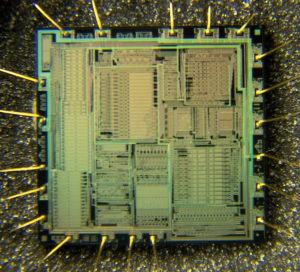Crack TMS320F28031 DSP MCU Locked Memory
The TMS320F28031 can address up to 64K words 16 bits of memory or registers in each of the program, data, and I/O spaces. On-chip memory, when enabled, removes some of this off-chip range. In data space, the high 32K words can be mapped dynamically as either local or global using the GREG register by Crack TMS320F28031 DSP MCU Locked Memory. A data-memory access mapped as global asserts BR low (with timing similar to the address bus).
The CPU of the TMS320x240 schedules a program fetch, data read, and data write on the same machine cycle. This is because, from on-chip memory, the CPU can execute all three of these operations in the same cycle. However, the external interface multiplexes the internal buses to one address and one data bus by Clone Philip Chip LPC87LPC761 Heximal Code. The external interface sequences these operations to complete the data write first, then the data read, and finally the program read.
The ’x240 supports a wide range of system interfacing requirements. Program, data, and I/O address spaces provide interface to memory and I/O, maximizing system throughput. The full 16-bit address and data bus, along with the PS, DS, and IS space-select signals allow addressing of 64K 16-bit words in program and I/O space for the purpose of Remove Protected P89LPC938 Chip Firmware. Due to the on-chip peripherals, external data space is addressable to 32K 16-bit words.
I/O design is simplified by having I/O treated the same way as memory. I/O devices are mapped into the I/O address space using the processor’s external address and data buses in the same manner as memory-mapped devices.
The ’x240 external parallel interface provides control signals to facilitate interfacing to the device. The R/W output signal is provided to indicate whether the current cycle is a read or a write when Recover MCU. The STRB output signal provides a timing reference for all external cycles.


